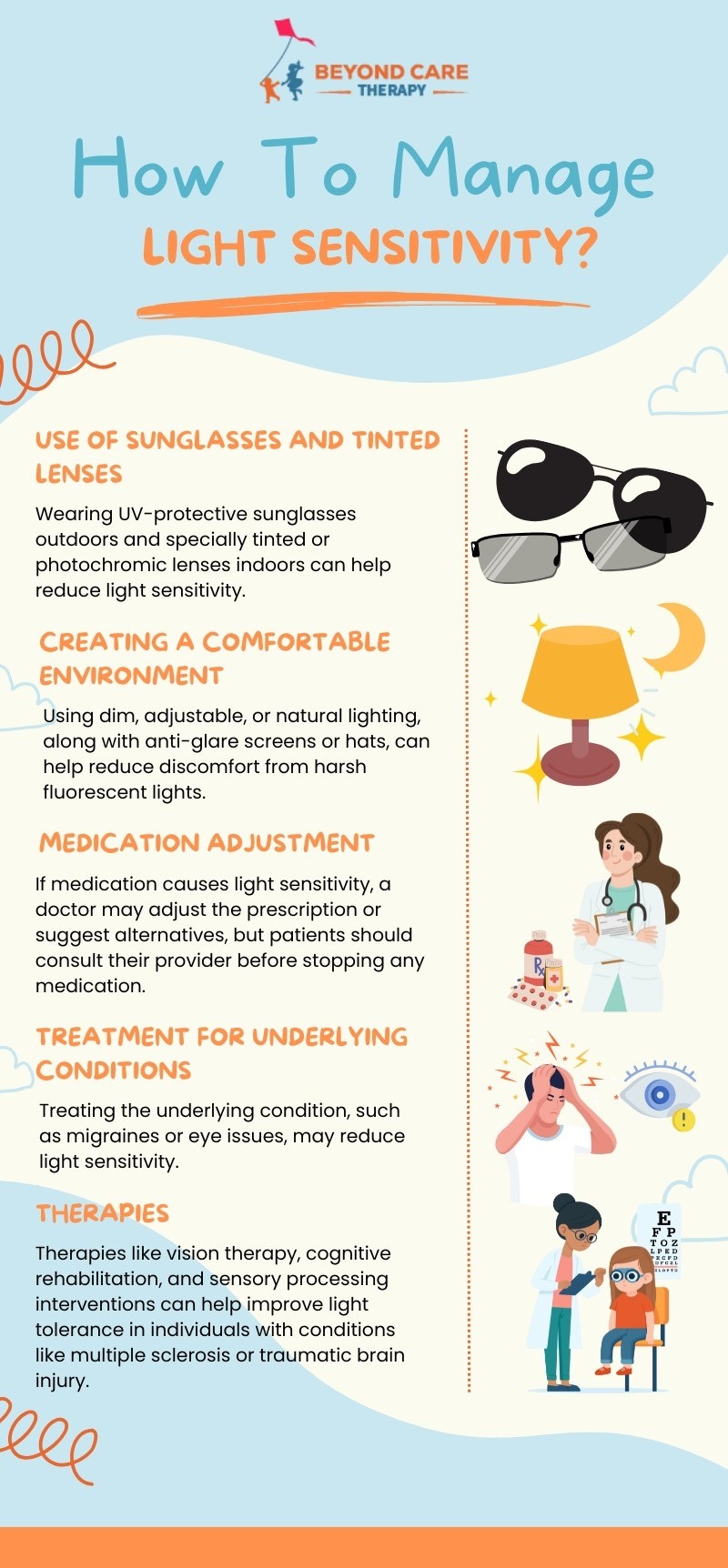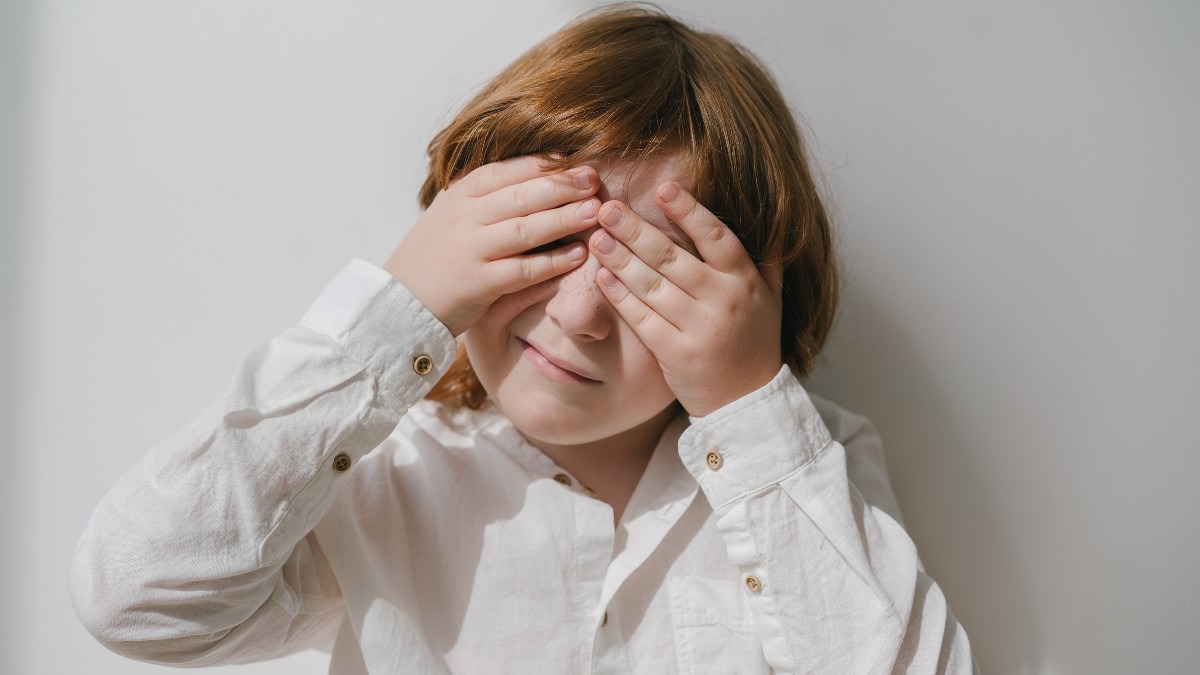Key Points:
- Light sensitivity, or photophobia, can be a symptom of other underlying conditions, but it can also be considered a disability when it impacts daily functioning.
- Common causes of light sensitivity include neurological disorders, eye conditions, and certain medications.
- Treatment options vary depending on the root cause, but accommodations can help manage the condition.
Light sensitivity, or photophobia, is a condition that can significantly impact an individual’s quality of life. It is characterized by discomfort or pain when exposed to light, even in normal or dim settings. For some, it can be a minor irritation, but for others, it can interfere with daily activities. With an increasing number of reports of light sensitivity linked to neurological disorders, eye conditions, and even medication side effects, it’s important to understand whether light sensitivity qualifies as a disability.
Is Light Sensitivity a Disability?
Yes, light sensitivity can be considered a disability if it severely affects an individual’s ability to perform daily activities. While light sensitivity itself may not always meet the legal criteria for disability, it can significantly impair a person’s functional abilities, especially when the discomfort prevents them from participating in work, school, or social environments. For those who experience light sensitivity as part of a broader medical condition, it can be considered a disability under various frameworks, including the Americans with Disabilities Act (ADA), if it impacts life’s major functions.
What Causes Light Sensitivity?
Understanding the causes of light sensitivity can help clarify when it may be classified as a disability. Many individuals who experience photophobia find that it is linked to an underlying medical condition. Below are some common causes:
- Migraines
Migraines are one of the most common causes of light sensitivity. The condition often includes other symptoms like nausea, visual disturbances, and throbbing pain. When a migraine occurs, exposure to light can worsen the pain. - Neurological Disorders
Light sensitivity is frequently a symptom of neurological disorders such as multiple sclerosis (MS), concussions, or traumatic brain injuries. The way the brain processes light can be disrupted in these conditions, leading to heightened sensitivity. - Eye Conditions
Conditions like dry eye, corneal abrasion, cataracts, and conjunctivitis (pink eye) can all lead to sensitivity to light. Since the eyes are the primary organ involved in processing light, any damage or irritation can result in discomfort. - Medications
Some medications, including certain antibiotics, antidepressants, and antihistamines, may cause light sensitivity as a side effect. In these cases, the sensitivity is often temporary and resolves once the medication is adjusted or discontinued. - Mental Health Conditions
Light sensitivity can also be linked to mental health conditions, particularly those involving sensory processing disorders or conditions like anxiety and depression. For individuals with heightened sensory perception, bright light can feel overwhelming. - Chronic Illnesses
Chronic conditions like fibromyalgia or lupus can lead to increased sensitivity to light. People with these illnesses may experience heightened sensitivity due to the ongoing strain on their immune or nervous systems.

How Does Light Sensitivity Affect Daily Life?
For individuals with light sensitivity, day-to-day activities may require significant adjustments. The effects of photophobia can vary depending on the severity of the condition and the specific cause. Some individuals may be able to function well with simple accommodations, while others may find that their lives are heavily impacted. Here are several ways light sensitivity can affect daily functioning:
- Workplace Challenges
Office lighting, fluorescent lights, or outdoor exposure can become overwhelming for someone with light sensitivity. It might be difficult for them to concentrate, complete tasks, or participate in meetings. - School Difficulties
Children or students with light sensitivity may struggle in environments with harsh lighting or in classrooms with bright overhead lights. Reading, writing, or sitting under fluorescent lights for long periods can cause discomfort. - Social Limitations
Social activities, such as going out to restaurants or attending events, can be challenging for those who experience discomfort in bright settings. Outdoor activities in direct sunlight may need to be limited. - Driving Difficulties
Bright headlights at night or glare from the sun during the day can make driving dangerous for people with light sensitivity. The strain on their eyes can lead to discomfort or distraction while on the road.
While there is no one-size-fits-all approach to managing light sensitivity, there are several strategies that can help reduce its impact. The right solution depends on the underlying cause, but here are some common strategies:

Is Light Sensitivity a Disability Under the ADA?
Under the Americans with Disabilities Act (ADA), a disability is defined as a condition that significantly impairs a person’s ability to perform major life activities. If light sensitivity severely impacts an individual’s ability to engage in activities like working, attending school, or participating in social life, it could qualify as a disability. For instance, someone with light sensitivity due to migraines may be entitled to workplace accommodations, such as dimmed lighting or the ability to wear sunglasses indoors.
How ABA Therapy Can Help Individuals with Light Sensitivity
For children or adults with light sensitivity who also face challenges with developmental or behavioral issues, ABA therapy can be an effective approach to managing the condition. Although ABA therapy is primarily known for its success in helping children with autism, it can also support individuals with other challenges, including light sensitivity.
ABA therapy focuses on teaching adaptive behaviors and coping strategies for dealing with sensory challenges. Through structured therapy sessions, individuals can learn how to better manage their responses to light and practice techniques to reduce the discomfort it causes. This may include using sensory integration strategies or gradually increasing exposure to different lighting environments in a controlled manner.
If light sensitivity is causing your child or loved one difficulties in daily life, consider seeking ABA therapy as a way to provide support. With personalized, evidence-based interventions, ABA therapy can help improve quality of life.
Partner with Beyond Care Therapy for ABA Therapy
If light sensitivity is impacting your child’s daily life, it’s essential to take proactive steps to manage it effectively. Beyond Care Therapy specializes in providing personalized ABA therapy to help children and families cope with sensory issues, including light sensitivity.
Located in Utah, Texas, Arizona, Massachusetts, we offer ABA therapy that focuses on building essential life skills, including coping with sensory challenges like light sensitivity. Contact us today to learn how we can create an individualized therapy plan to help your child thrive despite sensory challenges!

